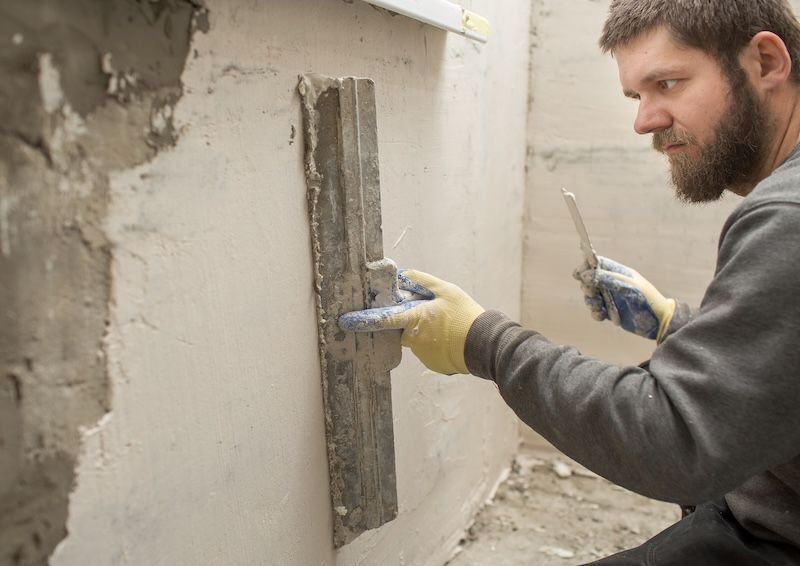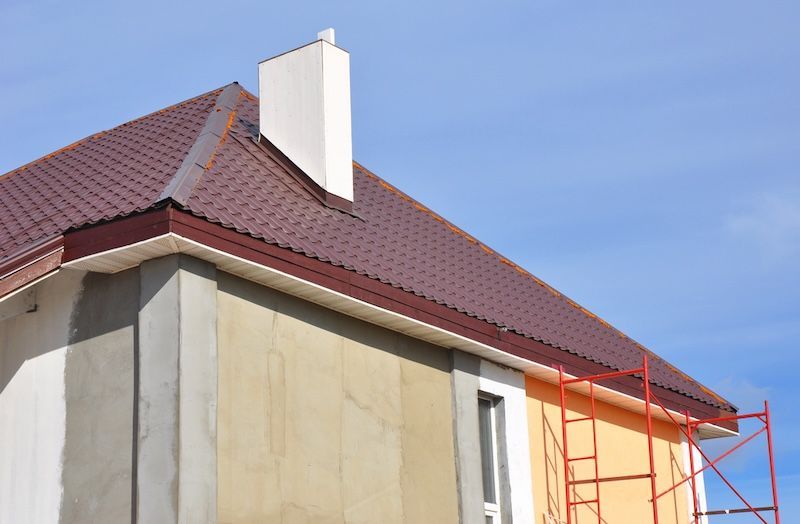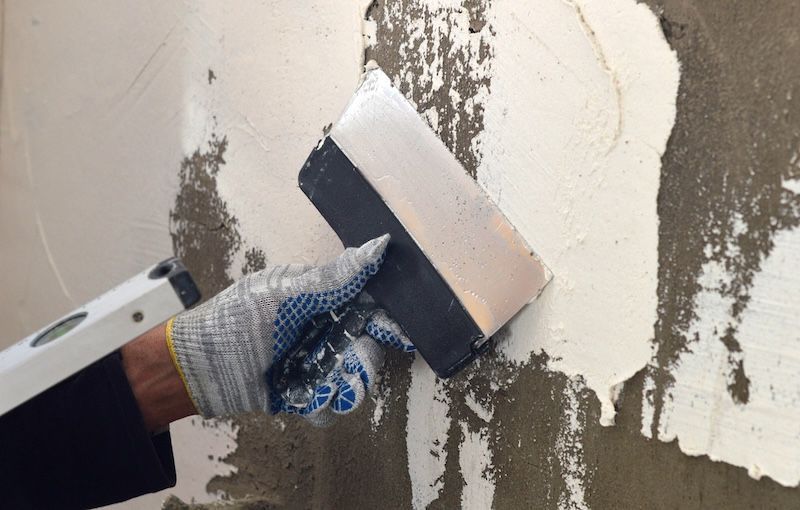Stucco Maintenance Tips for Orlando Homes Before the Rainy Season
Orlando's rainy season is unpredictable. One minute the sky is clear, and the next, your house is getting drenched in a sudden downpour. For homes with stucco siding, this extreme shift in weather isn’t just a nuisance—it can lead to costly moisture intrusion and serious structural damage if not addressed in time.
Stucco might look strong and solid, but even small cracks in stucco walls can allow moisture to seep in. That’s when problems like bubbling, mold growth, staining, and even peeling paint begin to surface. Many homeowners don't even notice there's an issue until water infiltration has already caused further damage.
But here’s the good news: most of this can be avoided with timely and consistent stucco maintenance. By taking just a few preventative steps before the rainy season hits, you can protect your home's exterior, prevent expensive repairs, and enjoy peace of mind.
What Is Stucco and Why Is It a Popular Building Material in Orlando?
Stucco is a weather-resistant building material made from a mix of cement, sand, lime, and water. It’s applied in layers to form a durable, breathable finish ideal for Florida's heat and humidity. Here's why it works for Florida homes:
- Handles high humidity and heavy rains better than traditional wood siding.
- Resists fire and provides long term protection.
- Adds insulation benefits.
- Delivers clean, stylish curb appeal.
- Can last for decades if properly maintained.
Still, even the most beautiful stucco exteriors need regular maintenance to stay strong—especially leading into hurricane season.
What You Need to Know About Orlando's Rainy Season
Orlando's rainy season usually starts in early June and lasts through late September. During these months, homes are exposed to:
- High humidity
- Afternoon thunderstorms
- Heavy rains
- Occasional tropical storms or hurricanes
These conditions increase the risk of water entering through small cracks or gaps in your stucco home. Early spring (March, April, and May) is the best time for stucco maintenance so your house is properly prepared before moisture causes existing damage to worsen.
Why Pre-Rainy Season Stucco Maintenance Is Essential

Delaying necessary repairs is risky. Even hairline cracks can allow water to creep into your walls, leading to:
- Mold growth behind stucco surfaces
- Bubbling, peeling, or flaking paint
- Structural damage from water infiltration
- Costly repairs and full resurfacing
By addressing issues early, you avoid bigger problems. Maintenance now means fewer minor repairs later and more savings.
Top Moisture Problems in Stucco Siding
Let’s explore the most common rainy-season issues for stucco exteriors:
1. Cracks and Water Intrusion
Minor cracks and even hairline cracks can allow water to reach the inner layers of your siding. This can weaken your walls and lead to mold, mildew, or insulation damage.
2. Mold, Mildew, and Stains
High humidity combined with water entering through damaged stucco can cause mold and mildew. These stains not only harm your home’s appearance but also impact air quality.
3. Bubbling and Peeling
When water gets trapped, it creates pressure that leads to bubbling or peeling paint. Over time, this causes paint failure and opens your exterior to further damage.
4. Structural Weakness
Ongoing water damage can compromise the structure underneath the stucco. This includes framing, insulation, and even the foundation.
Pre-Rainy Season Stucco Maintenance Checklist
A proactive approach keeps your home protected. Use this checklist to prevent costly damage:
1. Do a Full Walkaround
Inspect your stucco regularly. Look for:
- Cracks or holes
- Bubbling or peeling
- Discoloration or chalky residue
- Soft or hollow-sounding areas
- Mold or mildew growth
Use a flashlight and even a moisture meter in shaded or high-risk spots.
2. Repair Cracks Immediately
Small cracks should be sealed using high-quality elastomeric paint or caulk designed for stucco surfaces. This flexible material expands and contracts with the wall. For deeper cracks or damage, professional help from local stucco contractors is best.
3. Clean Your Stucco Surfaces
Use a garden hose and a stiff bristle brush for routine cleaning. For more thorough jobs, a power washer on proper settings (under 1,500 PSI) can help remove dirt, mildew, and other debris. Add dish soap or trisodium phosphate (TSP) for stubborn stains. Rinse well and ensure the surface is completely dry before sealing or painting.
4. Repaint If Needed
A fresh paint job is about more than appearance. Elastomeric paint provides weatherproofing and breathability. Repaint every 5–7 years to protect your home’s exterior from water damage and UV wear.
5. Check Gutters and Drainage
Clear gutters of leaves, twigs, and debris. Make sure downspouts direct water away from walls. Install splash blocks to prevent water from splashing back onto stucco siding.
Long-Term Maintenance Tips for Stucco Homes
Preventative care is the key to long-lasting protection. Here are tips to maintain your stucco regularly:
Set a Regular Maintenance Schedule
Inspect your exterior twice a year. After heavy storms or during hurricane season, check for new cracks or damage.
Manage Landscaping
Trim back bushes and trees to prevent moisture buildup against the wall. Make sure soil slopes away from your home to stop water pooling near the foundation.
Add Extra Waterproofing
Apply a breathable stucco sealer every few years. Some stucco professionals also install weep screeds and drainage systems for added moisture protection.
When to Call a Stucco Professional
DIY repairs are fine for small cracks, but for larger or widespread issues, call a licensed contractor. here are some signs that you need professional help:
- Multiple or deep cracks
- Bulging or flaking stucco
- Persistent mold growth
- Musty smells inside
- Water spots on interior walls
A stucco contractor can conduct thorough inspections and recommend necessary repairs. Many offer a free consultation to assess existing damage.
Protect Your Home Before the Rain With Stucco Maintenance
Stucco maintenance is more than just a seasonal task—it’s a smart investment in your property’s future. Taking steps to inspect, clean, and repair cracks before the rainy season means avoiding water damage, costly repairs, and unnecessary stress.
With a little elbow grease and the right approach, your stucco siding can stay strong and beautiful for years. For expert care, trust Orlando Stucco Repair Pros to keep your home safe and sound before, during, and after the stormy season.
Frequently Asked Questions
How often should I inspect my stucco exterior in Orlando?
Do regular inspections twice a year—in spring and fall. After any heavy rains, double-check for new cracks or other damage.
What’s the safest way to clean stucco?
Use a garden hose or power washer on proper settings. Add mild detergent like dish soap or TSP. Avoid improper use of high pressure, which can cause paint failure or surface damag
Is repainting stucco just cosmetic?
No. A good paint job helps seal out moisture and extends the life of your siding. Elastomeric paint offers added protection.
How do I know if there’s moisture behind my walls?
Signs include peeling paint, persistent mold, musty smells, or soft spots. For accurate results, call a stucco professional for an inspection.
Do I need a contractor for stucco maintenance
You can handle basic tasks, but for necessary repairs or suspected moisture intrusion, it's best to get professional help.


